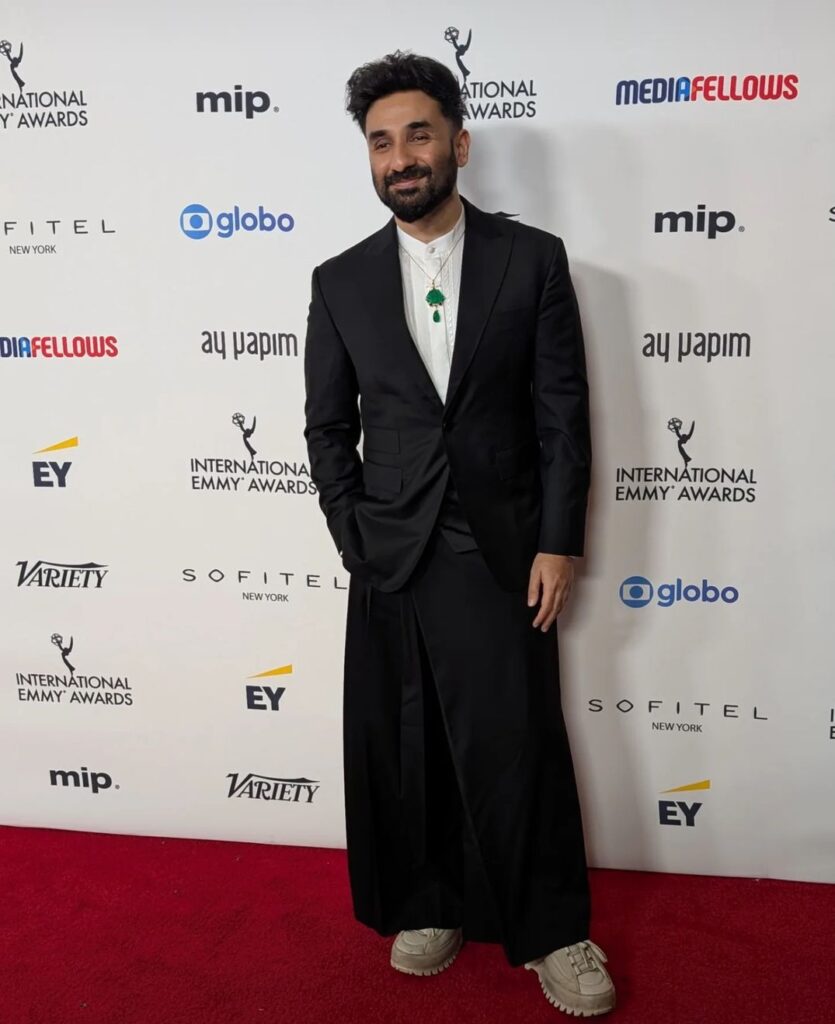In India, virality is not a formula—it’s a darshan. A sacred spectacle performed in public, shared on WhatsApp, stitched on Instagram, and screen-grabbed into immortality. Just like a holy man in saffron standing waist-deep in water, holding a bird toward the sun as thousands gather around him, viral content in India isn’t quiet. It is dramatic, devotional, and deeply layered.

In the age of algorithms, going viral in India is no less sacred than a ritual—and often just as theatrical.
If you’ve ever wondered why one comedian’s monologue sends WhatsApp into overdrive or how a single LinkedIn post manages to cause a collective professional identity crisis, welcome to the weird and wonderful mechanics of Indian virality. It’s equal parts outrage, relatability, linguistic flair, and pure platform wizardry.
Between 2023 and 2025, Indian virality evolved beyond the memeable moment. It became a business model, a political strategy, and a personal branding superpower. At the center of this digital cyclone? The sharp-tongued, globally footed comedian Vir Das and the surgically precise communication analyst Karthik Srinivasan.
But beyond these headline names, India’s viral economy has also become a playground—and battlefield—for marketers. Because if you’re building a brand in 2025, you’re not asking “How do I go viral?” You’re asking “How do I make it stick once I do?”
Satire, Scandals & Scrotum Jokes: The Vir Das Effect

When Comedy Met Controversy
Vir Das has perfected the art of using discomfort as rocket fuel. His 2024 International Emmy monologue poked at everything from immigration to Indianness—with one-liners like “I’m here completely legally… just to vote.” YouTube watch times clocked in at 72% retention, with 43% of views shared over WhatsApp. In India, that’s practically a standing ovation.
In 2025, he took things up a notch at Cannes. Mocking red carpet restrictions, he declared, “I’ll wear a 78-foot beige gown showcasing my scrotum”—which, in fashion terms, is called a statement. Instagram reeled in 790K likes. Marathi memes comparing Cannes dress codes to dhoti bans flooded the internet. This wasn’t just humor—it was strategic absurdism.
Trolling That Pays
When Das roasted Maharashtra CM Eknath Shinde, supporters retaliated by vandalizing shops named “Kalra Electronics” (note: not related to Das at all). But the internet responded with memes:
- AI-generated Shinde voice: “Pehle spelling seekh lo”
- Google Maps memes: “Yeh nahi, Vir Das!”
The result? A 212% spike in Das’s Patreon subscriptions. Moral of the story: even misplaced outrage, when packaged right, becomes brand capital.
For marketers, this is not about mimicking irreverence—but learning from it. What Das consistently does is create emotionally shareable content that balances edge and empathy. He isn’t just being provocative—he’s being purposeful, and his metrics show it.
LinkedIn Isn’t UPI: Karthik Srinivasan’s Viral Framework
From Consistency to Cultural Relevance
Karthik Srinivasan’s viral philosophy is rooted in a paradox: the more consistent you are, the more surprising your insights can be. In his 2025 post Six Perspectives on Falling Reach, he dismantled the “algorithm-blaming” mindset:
“LinkedIn isn’t UPI. You can’t just scan-and-pay with your content. Context matters.”
He urges marketers to replace growth hacks with message clarity:
- Spend 70% of time on articulation, not amplification
- Use regional metaphors in English posts to connect emotionally
Political Branding as Proof of Concept
In his analysis of Bharat Jodo Yatra, Srinivasan outlined what worked:
- Localized hashtags like #BJY_Tamil drove 2.8M+ tweets
- Short, authentic video clips (e.g., Gandhi hugging farmers) outperformed full speeches by 300%
This isn’t just a social strategy—it’s cultural mapping. Marketing teams need to learn this if they want to land messages across India’s linguistic and emotional spectrum.

Platform-Specific Virality: A Playbook for Marketers
YouTube: Mixing Mediums, Dodging Filters
Vir Das’s video about Kunal Kamra’s legal trials featured:
- Police body cam footage
- AI-generated Modi voiceovers
- Satirical jingles
It was cheekily categorized as “educational” to bypass political content filters—resulting in 22M+ views.
For brands, this underscores a key lesson: virality on YouTube is about format elasticity. A product explainer? Add narrative tension. A campaign film? Sneak in humor or shock value. The algorithm rewards ingenuity.
LinkedIn: The Rise of the Thoughtfluencer
Srinivasan’s #70DayChallenge invited professionals to post consistently for 10 weeks. The result?
- 200% increase in profile views
- 3x engagement on Hinglish posts vs. English-only
For marketers and founders, LinkedIn is no longer about job updates—it’s where micro-branding, executive visibility, and storytelling collide. Content that blends authority with relatability outperforms traditional PR.
Emotional Triggers and Meme Templates
Indian virality, unlike its Western counterpart, is a deeply emotional and often culturally coded phenomenon. Marketers should stop chasing bland virality and instead study patterns:
- Outrage + Humor (e.g., misplaced boycotts)
- Cultural Irony (e.g., Cannes dress code vs. Indian modesty)
- Meme Templates as Content Strategy
When a meme goes viral, it’s not just content—it’s contextual language. Brands like Zomato and Swiggy have already mastered this, using meme culture to create snackable engagement during cricket matches or election season.
The Cost of Virality: What Marketers Often Miss
Creator Burnout Mirrors Campaign Fatigue
Vir Das paused his Mind Fool tour due to content burnout. Why does this matter to marketers? Because the average digital campaign also faces fatigue faster than ever:
- Shelf-life of social campaigns is now < 7 days
- Brands must balance virality with content ecosystem planning
Authenticity vs. AI Fakeness
A 2024 study by Srinivasan found:
- 89% of Tier-2 users could detect AI-generated “regional” content
- 68% preferred WhatsApp forwards to branded news portals
Marketers using AI for localization should beware: authenticity isn’t just a tone—it’s a trained muscle. If your content reads like it was written by a committee, your audience will sniff it out.
Case Studies: Marketing Campaigns That Understood the Assignment
1. Spotify India’s Regional Reels
- Used meme templates in Tamil, Telugu, and Marathi
- Saw 4x engagement compared to their pan-India campaigns
2. Amul’s Satirical Panels
- Continues to stay culturally relevant by riffing off politics, cinema, and cricket
- Their 2024 Satya Nadella doodle went viral for blending tech pride with visual nostalgia
3. Dunzo’s Hyperlocal Humor
- Bengaluru-based campaign: “Your dosa dreams, our delivery reality” went viral during breakfast hours
- Used neighborhood references and language quirks
Strategy 2025: Building Viral Legacies, Not Just Viral Moments
Marketing teams chasing virality must think like content creators and strategists. Here’s the blueprint:
- Think Small, Win Big: A tweet with the right hook can outperform a ₹20 lakh ad spot. Prioritize nimble experiments.
- Know Your Audience’s Subtext: A Hinglish pun works better in Delhi than Chennai. Regional relevance is not optional.
- Time It Right: Most viral posts in India spike between 9–11am and 9–11pm IST—commute scrolls and post-dinner doomscrolling windows.
- Treat Backlash as Feedback: If you’re trolled, don’t panic. Listen, learn, and—if you’re Vir Das—monetize it.
- Train Teams in Meme Literacy: Understand template anatomy, image-text balance, and tone calibration.
Conclusion: The Long Game of Indian Virality
India’s viral culture is no longer about luck or algorithmic magic. It’s about timing, tone, texture, and tactics. From comedians weaponizing humor to consultants decoding algorithm myths, virality is being engineered—not just encountered.
For marketers, the new virality isn’t about loud campaigns or viral stunts—it’s about building a system that consistently produces timely, culturally relevant, emotionally charged content that travels.
Or in the wise words of Karthik Srinivasan:
“Virality isn’t about trending—it’s about creating reference points that outlive platforms.”
And if your next ad, post, or meme can do that—you haven’t just gone viral. You’ve built value.
Sources: India Today, LinkedIn, Hindustan Times, Indian Express, TICE, YourStory, YouTube, Manifest Media
